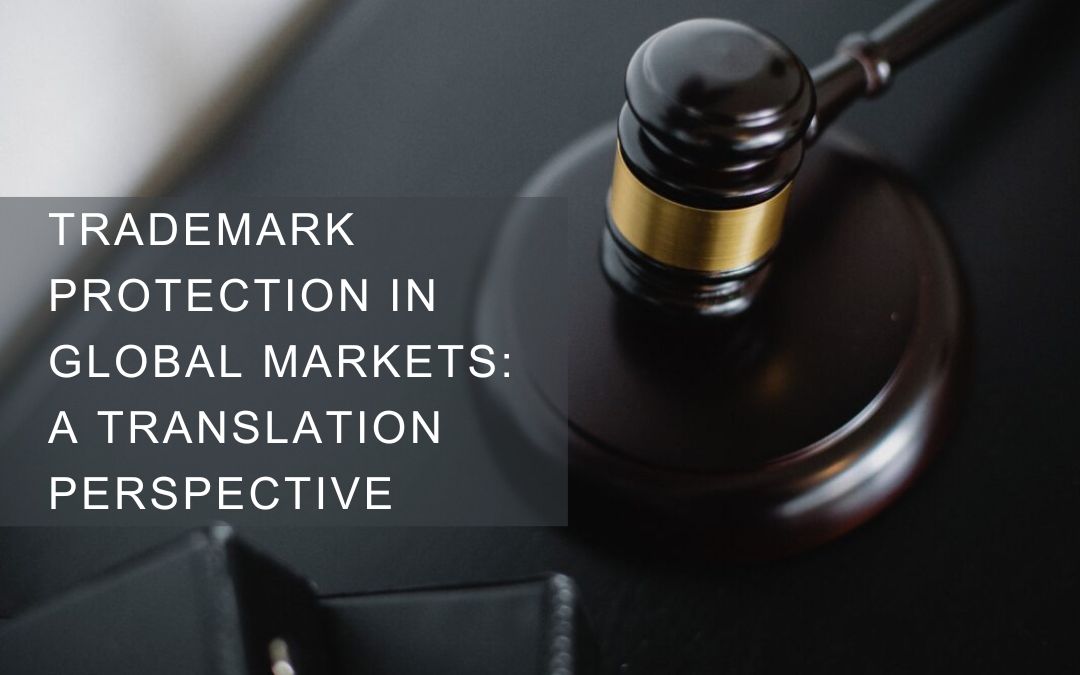In an increasingly interconnected world, expanding into global markets is a strategic imperative for businesses. However, the process of trademark protection in these markets poses unique challenges, especially when viewed from a translation perspective. In this blog post, we will explore the fifteen crucial aspects of trademark protection in global markets.
1. Introduction to Global Trademark Expansion
Trademark expansion beyond national borders is the natural progression for successful brands. Your trademark represents your brand’s identity and reputation. As you step onto the global stage, safeguarding this identity becomes paramount. International trademark protection is not merely a legal necessity; it’s a safeguard against brand dilution, imitation, and potential damage to your reputation.
2. The Multilingual Challenge
Language and culture are integral to identity, and they can be a double-edged sword in global trademark protection. Language differences and cultural nuances can make translating and protecting trademarks an intricate task. A brand name that resonates positively in one language might have an unintended or even negative connotation in another.
3. Legal and Regulatory Considerations
Trademark law varies from country to country, making it essential to navigate local regulations effectively. International treaties, such as the Madrid Protocol, can simplify the process to some extent, but understanding the intricacies of each market’s legal framework remains crucial. Failure to do so may result in legal disputes or even the loss of trademark rights.
4. Translating Brand Names and Logos
Translating brand names and logos can be a daunting task. The challenge lies in maintaining brand consistency while accommodating linguistic and cultural differences. Literal translations may not capture the essence of your brand, while creative translations (transcreation) can bridge the cultural gap more effectively. Striking the right balance is key.
5. Cultural Sensitivity in Trademarks
Cultural sensitivity is paramount when translating trademarks. What might be a perfectly acceptable brand name in one culture could be offensive or inappropriate in another. Cultural taboos, beliefs, and perceptions must be carefully considered to avoid brand damage and potential legal issues.
6. Transcreation vs. Literal Translation
Choosing between transcreation and literal translation depends on your brand’s positioning and target audience. Transcreation allows for more creativity and adaptability, particularly when a direct translation may not capture your brand’s essence. However, it can be more time-consuming and costly than literal translation. The choice ultimately depends on your brand strategy and budget.
7. Trademark Examination and Registration
Trademark examination and registration in foreign markets involve navigating linguistic and legal complexities. Each country has specific requirements for trademark applications, including translations of the mark and adherence to local legal standards. It’s essential to work with experienced trademark lawyers and translators who understand the intricacies of each jurisdiction.
8. Enforcing Trademark Rights Globally
Trademark enforcement can be a complex and costly process, especially when dealing with international infringement cases. To protect your brand effectively, it’s crucial to understand the legal mechanisms available in each jurisdiction and be prepared to take legal action when necessary. This might involve pursuing trademark disputes in foreign courts or working with international intellectual property agencies.
9. Trademark Monitoring and Maintenance
Trademark protection doesn’t end with registration; it requires ongoing monitoring and maintenance. Regularly check for potential infringements or unauthorized use of your trademarks in global markets. Promptly address any violations to safeguard your brand’s integrity and reputation.
10. Case Studies: Successful Global Trademark Strategies
Explore real-world examples of businesses that have successfully navigated the challenges of global trademark protection. Case studies provide valuable insights into effective strategies, lessons learned from mistakes, and the importance of cultural and linguistic considerations.
11. The Role of Professional Translators
Professional translators play a pivotal role in the global trademark protection process. They possess the language skills and cultural awareness required to ensure accurate and culturally sensitive translations of trademarks. Collaborating with experienced trademark translators is essential for maintaining brand consistency and legal compliance.
12. Emerging Trends in Global Trademark Protection
Stay informed about emerging trends and technologies shaping global trademark protection. Advancements in artificial intelligence, machine learning, and blockchain are influencing how brands monitor and safeguard their trademarks in the digital age.
13. Protecting Trademarks in E-Commerce and Online Marketplaces
As e-commerce continues to grow, protecting trademarks online is of utmost importance. Explore strategies for safeguarding your brand on e-commerce platforms, social media, and other digital channels where trademark infringement can occur.
14. Trademark Translation Best Practices
Summarize key best practices for trademark translation in global markets. Offer practical tips for businesses, including the importance of a centralized brand glossary, ongoing linguistic audits, and regular updates to translations.
15. Conclusion: The Value of Effective Trademark Translation
In conclusion, effective trademark translation is a critical component of global brand protection. Businesses must navigate linguistic, cultural, and legal challenges to safeguard their brand identities and reputations in international markets. By addressing the topics discussed in this blog post and implementing best practices, businesses can build a strong foundation for successful global trademark protection and expansion, ensuring that their brands continue to thrive and resonate with diverse audiences worldwide.
[wpforms id=”3801″ title=”true”]

